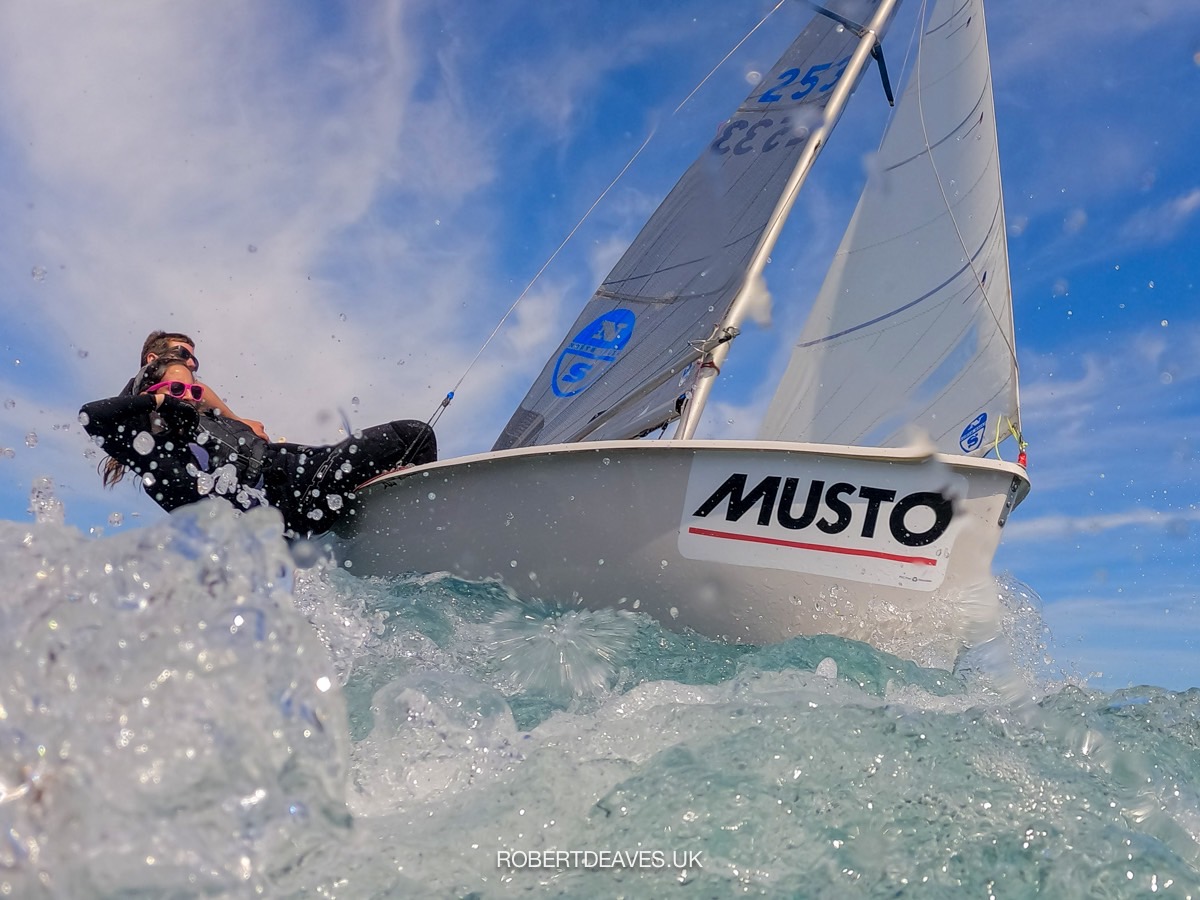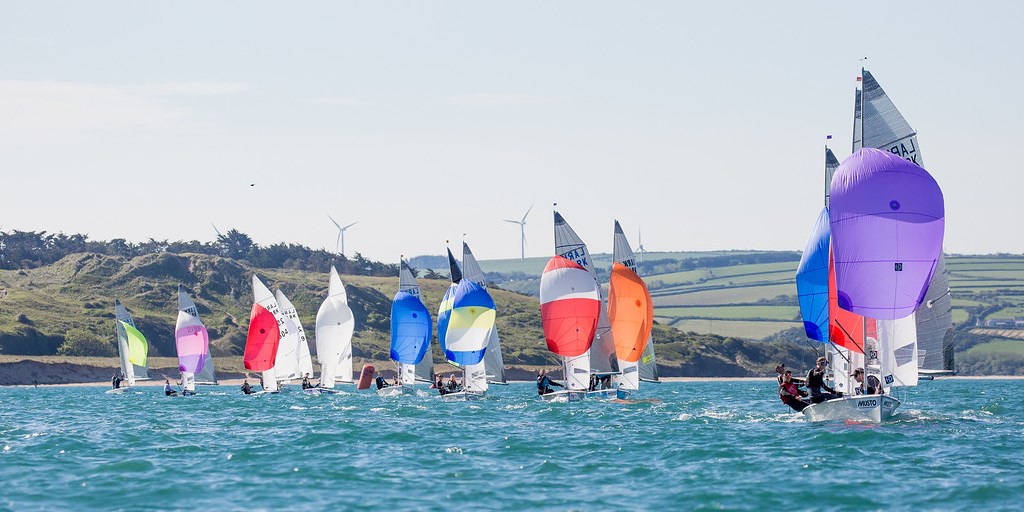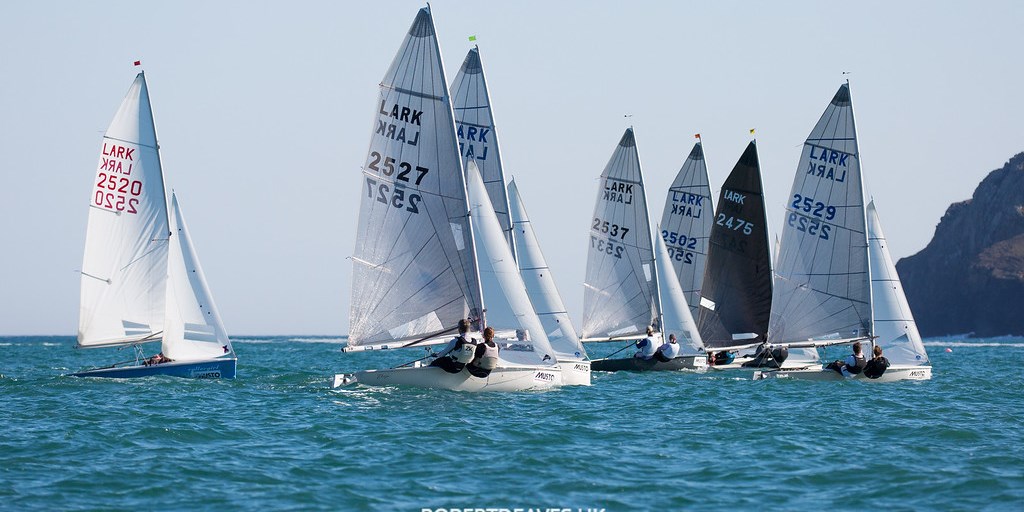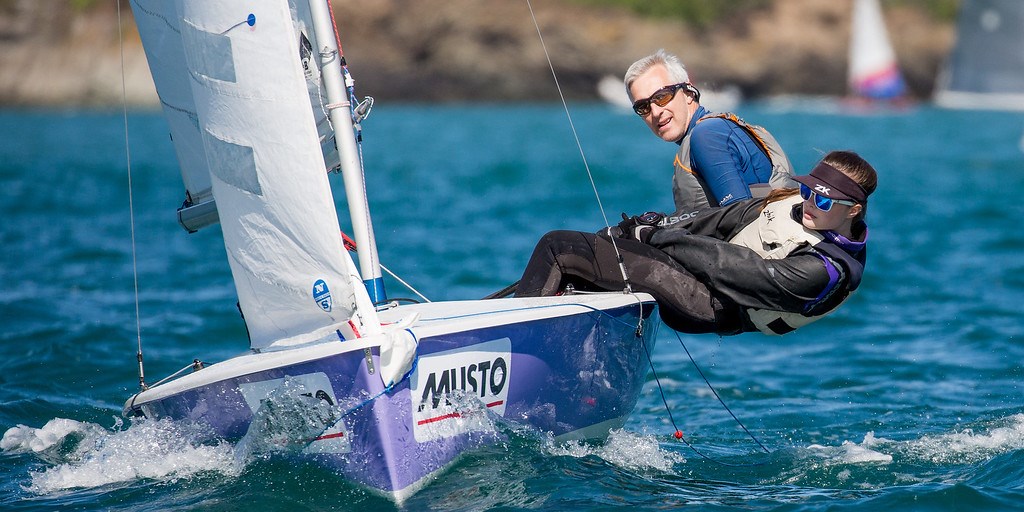Buying a new Lark
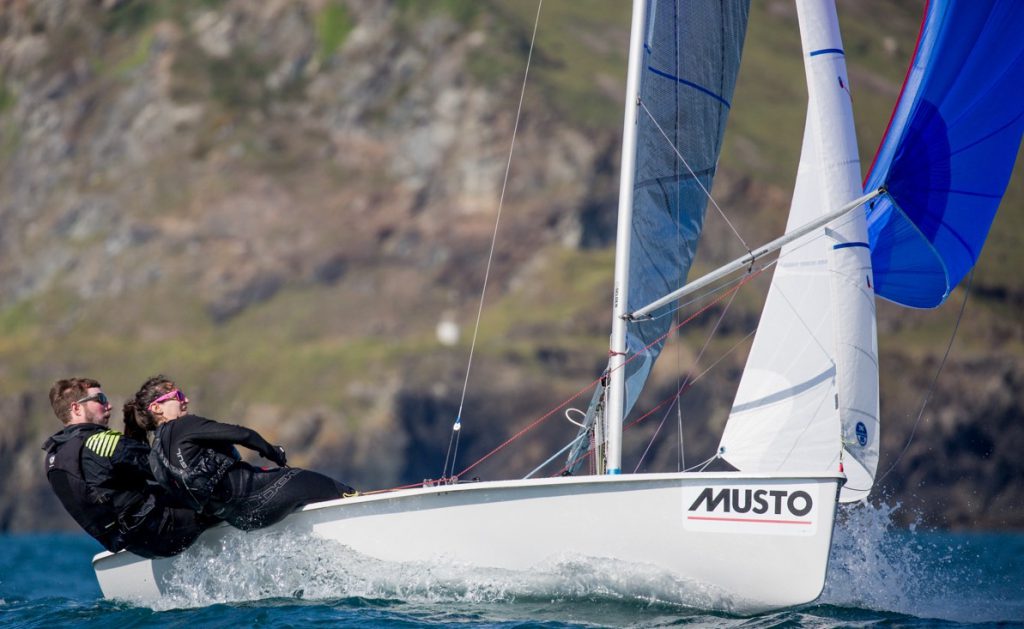
Now is the time to buy a new Lark! It is now possible to buy “off-the-shelf” direct from Synergy Marine and leading dinghy chandleries: Pinnell & Bax, CS Boats, Boon Boats, Synergy Marine and DinghySport. Alternatively you can also buy standard hulls directly from Synergy Marine to complete the fitting yourself.
Prices vary depending on the fit out of the boat, sails, foils, combi trailer and covers. But a new boat, complete, can be put on the water for as little as £7,500. Compared to many manufacturers classes the Lark provides a lot more boat for your money!
If you have any specific questions regarding buying a new Lark then please contact or use the Lark Website Discussion Forum where Lark owners will be happy to help answer your questions.
Alternatively if you would prefer to buy second hand then check out our “Buying a second hand Lark guide” (See beow).
Lark Builder
Synergy Marine are the official builder of the Lark Class and can supply blank and fully fitted Larks.

For further details of buying a Synergy Marine Lark click here.
Synergy Marine
17C Seven Acres Business Park
Newbourne Road
Waldringfield
Suffolk
IP12 4PS
Tel: +44 (0) 1473 736293
Email:
Website: http://synergymarine.co.uk/
Lark Suppliers
Fully fitted Larks are available from the following chandlery who can also supply all components for existing boats including spars, foils, sails and other hardware.
Pinnell and Bax
Heathfield Way
Kings Heath
Northampton
NN5 7QP
Tel: 01604 592808
Fax: 01604 592818
Website: www.pinbax.com
Email:
Buying a Second Hand Lark
Over the 40 years Larks have been in production over 2500 hulls have been made. Some of which are owned and raced regularly, however many are sitting in dinghy parks or garages providing a safe habitat for an abundance of wildlife. The materials used and build quality of the Lark means that virtually all of these hulls could be restored with minimum expense and therefore offer an excellent opportunity for sailors on a budget.
Like all other classes of boats, there have been weaknesses in the design of the boat, although the Lark has proven to be a boat where these weaknesses can be fixed easily and cheaply. It is important to recognise these areas so that when purchasing a second hand boat you get the best value for money. The following article explains what to look for when buying a second hand Lark
The Hull
Start by assessing stiffness, important for transferring load from the rig into forward motion. Five different deck formats (excluding the wooden decked boats) have been manufactured each of which has increased the stiffness of the boat. The original John Baker boats had problems with Centreboard case stiffness until a supporting beam was designed to go between the front of the case and the side tanks. If you are looking at a boat from this period and it hasn’t had a beam added try moving the case side to side. If it moves you may need to add a supporting beam to make the boat competitive.
All designs of Lark (up until the new Rondar boats) have had problems with gunnels. Unfortunately they have proven to be brittle when hit by another boat and with enough use have shown to crack after several years of hard hiking. Repair is easy and cheap for a boat builder but if you are buying you may want to avoid having to have this done. Look along the top and bottom of each gunnel for cracks and try pushing down on the gunnel: it shouldn’t flex at all. Also ask the owner if they have had repairs done previously and examine areas that have been repaired.
The floor can be an area of weakness, particularly at the back where the hull shape is flat. Parkers noticed this weakness and designed floor battens to stiffen the floor up but this only came in on the Parker mark 2. Boats prior to this can be slightly softer in this region however it shouldn’t be a major problem unless you want to sail on waves where the longitudinal flex is a disadvantage.
The fore decks can be a weakness on all generation of hull. Large loads are transferred through from the mast gate (and mast ram if the boat has got one) and years of crews sprawling on the fore deck can cause damage. Try pushing down on the fore deck and then get your head right underneath and examine this area well. It will flex a bit, however there shouldn’t be signs of cracking and again if the area has been repaired ask the owner why. All Parker Mark 2 boats should have a deck tie rod going from the mast heel to the deck to prevent the deck lifting under load. Check that this rod is straight, as a bent rod indicates that the deck has been treated badly. Prior to the Parker mark 2 the mast gate was a u shape and did not surround the mast, which suited the trend at the time to sail with a straight mast with less rake. Nowadays however most Lark sailors use much more rake which would bring the mast aft of the gate on the Parker mark ones or older. You may find that as a result the gate has been extended to accommodate more rake; do not worry this is fine. If it hasn’t been extended either sail with less rake or follow the simple instructions for extending the gate on the Lark website.
Buoyancy can be a problem if the boat has not been looked after. A common problem is air leaking through unfilled holes, inspection hatch covers or from the joint between side tank and floor. To test it buy some see through plastic tubing before going to buy the boat. Cut the tubing into two pieces about 1 metre long. Push one end of each piece through corks that will fit into the buoyancy drain holes. Then when viewing the boat take the two buoyancy plugs out and put your corks in. Make one tube into a U-shape and fill it up with a bit of water. Then blow into the other tube so that the pressure goes up in the tank. If all is well the water in the U will go up and not fall more than 2cm in 30 seconds.
Check the hull for scratches and general paintwork condition. Scratches can be taken out either by a builder or by yourself if you can gel coat, however it is either an extra expense, or a time consuming procedure.
If you are looking at a Rondar hull you should find that most of the above is not a problem. The hulls are constructed of GRP foam sandwich which provides a very stiff hull. Although it doesn’t hurt to undergo the same checks as for older generation Larks.
Spars
It seems obvious but check that they are straight. Look down it from top to bottom and you should see a small amount of curve front to back but no bend side to side. If it is bent sideways it is useless. Lark masts tend to break at spreader level (look for corrosion) or at deck level and below (check for unused holes that serve only to weaken the spar).
The boom may also be slightly bent top to bottom but shouldn’t be bent sideways. Booms rarely break but if they do it is either at the kicker (corrosion) or main sheet fixing.
Foils
Lark centreboards are made of alloy and as such can get bent. The best way to check is to capsize the boat on land, pull the centreboard out and look down its length. If the owner is not too happy about this or there is no soft land lift the boat up either with helpers or road tyres (often found in dinghy parks) and check that the centreboard goes up and down without trouble.
Rudders vary enormously and are fundamental to the ease of which the boat will be sailed. At the worst end of the scale you will find short rudders made out of flexible or heavy materials such as Ply or Mahogany with sloppy fitting stocks and weak wooden tillers. At the best end of the scale you will find fully carbon, lightweight, extremely stiff, long and thin fixed blades. What you require will depend on the type of sailing you are going to do. If you are planning on sailing on inland waters you will be able to get away with the home made variety without too great a problem however if you are expecting to venture into mountainous seas in a force 6 I would strongly recommend the fixed carbon variety. Either way you should check for scratches, cracks and missing chunks out of the blade itself and you should try the rudder on its pintles before you buy. If the rudder fits poorly onto the pintles the boat will be unresponsive and hard to sail.
Sails
Obviously this will depend on the type of sailing you want to do but the age and make of the sails is important. At the moment the winning sails are North, Hyde, Ullman, Speed, Pinnell and Bax, Macs, and Suggitt. Others have been used very successfully in the past however it is these names that are being used on the circuit at the moment.
Unroll each sail and check it for holes, particularly the Spinnaker and the windows of the main and Jib. Look at the luff of the jib where the spinnaker pole has rested against it on a tight reach, is there a hole? Hold the Jib up and look down its leach. If there is no shape to the leach or there is a multitude of creases it is going to be less effective. Check that the main has got battens and sail numbers and check that all sails are signed by a measurer. After all you don’t want to buy a Lark and then find that your unmeasured spinnaker is actually designed for a 420.
Miscellaneous
Covers, trailers, trolleys and rope cost a lot of money so do not ignore it when buying your boat. Look at the covers for holes and try to rip it with your hands. Check that the hull sits well on the trolley and that if it is designed to fit on a combi trailer it does so well. Check the road tyres on the trailer for tread because they may give you a clue that the wheels are toeing in/out.
And finally
Has the boat got a certificate? If not why not? It may be that there is a history to the boat that is being hidden so investigate. If there is no certificate contact the class secretary at . We should be able to tell you if the boat has been previously owned by a University (this is not necessarily bad: there are some very good ex-university boats competing on the circuit) or if we have any record of it passing measurement and buoyancy tests. We may also be able to tell you that the boat you are thinking of buying is a known rock star with National titles under its belt.
